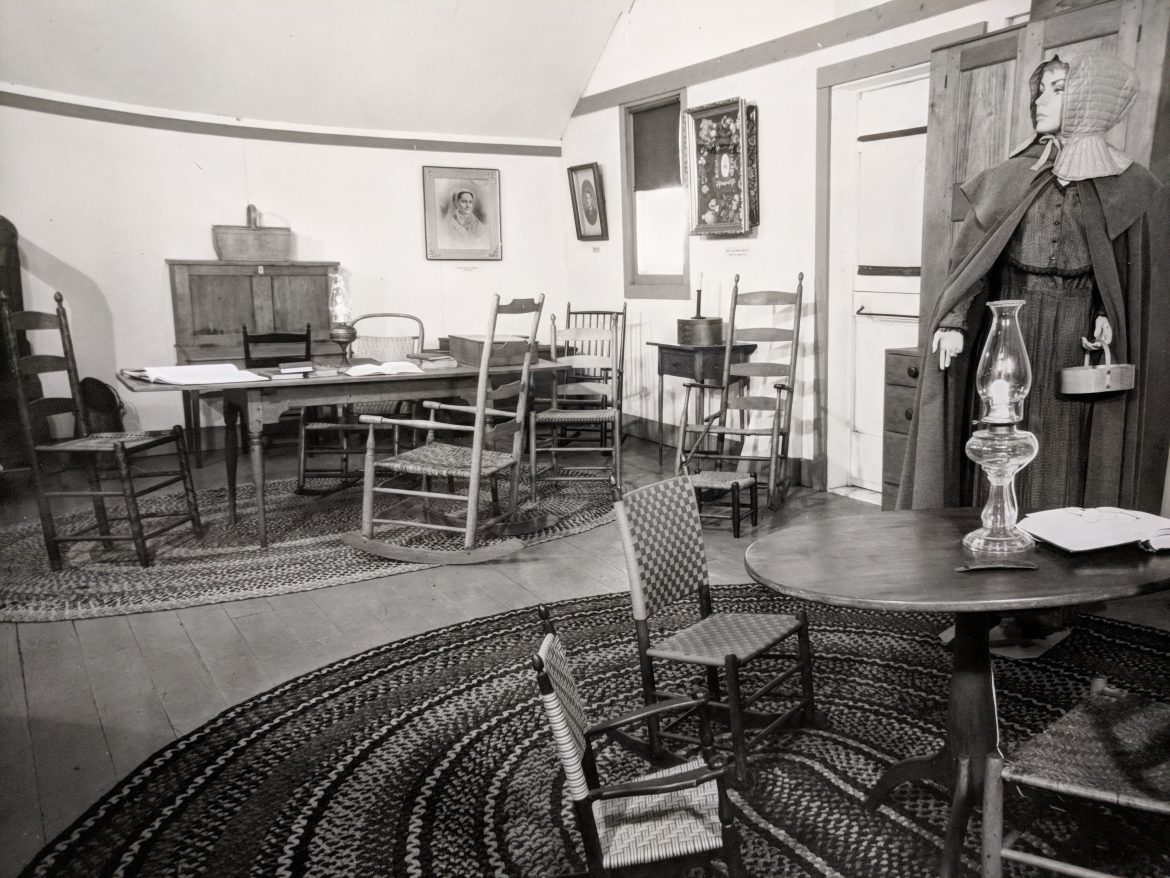
Our blog today is written by Julia Pelkofsky, Cataloger for the collections digitization project. In 2016 Shaker Museum | Mount Lebanon received a $750,000 grant to put its collections online. As part of that process, individual objects are being cataloged, their data input into an electronic database. As this process goes on, the objects begin […]
Our blog today is written by Julia Pelkofsky, Cataloger for the collections digitization project.
In 2016 Shaker Museum | Mount Lebanon received a $750,000 grant to put its collections online. As part of that process, individual objects are being cataloged, their data input into an electronic database. As this process goes on, the objects begin to tell more than just the history of the Shakers, but the history of the museum and its practices. After completing an inventory of a storage space, we came across a few items that had us wondering what led to certain objects being treated the way they were.

Wick holders, ca. 1844 – 1950, Canterbury, NH, Shaker Museum | Mount Lebanon: row 1: 2018.7.1, 1950.3700.2, 2018.7.2; row 2: 1962.13779.2, 1950.3699.2, 1950.3701.2. Staff photograph.

Wick holder, ca. 1880-1950, Canterbury, NH, Shaker Museum | Mount Lebanon: 1950.3699.2. Staff photograph.
When I began to catalog a box of wick holders for oil lamps, the majority of which were acquired by the museum in the 1950s, I noticed that each holder was marked with its accession number followed by an “-A”, meaning that it was a part of a set. This didn’t raise any red flags at first, but I soon realized there was no original record of any “-A” associated with any of the accession numbers I had in front of me. The accession cards created at the time the objects were accepted by the museum did not offer much help in this way as the cards described whole lamps, and made no mention of a wick holder, solitary or otherwise.

Lamp and Wick holder, ca. 1895-1940, Canterbury, NH, Shaker Museum | Mount Lebanon: 1950.3699.1 (lamp) 1950.3699.2 (wick holder). Staff photograph.
I presented this to one of my colleagues, who was similarly perplexed, but directed me to check in another storage area where she knew some lamps were kept. Sure enough, these lamps matched the numbers of the wick holders, which had started this journey. I was excited to have the prospect of reuniting a collections piece, but while surveying the lamps I saw an immediate obstacle. The lamps I had in front of me were all converted to electric. There was no mention of this in any file, so it was unclear when the conversion was done and why.
Only one lamp in this group mentioned specifically that it had been electrified by the Shakers and its electrical cord looked far older than the ones attached to the lamps in question. Therefore, it seemed likely the conversion from oil to electric lamp happened after the museum had acquired these lamps.

Sitting Room Gallery, 1976, Shaker Museum | Mount Lebanon. The Lees Studio, photographer.
In talking with Jerry Grant, Director of Collections and Research, he explained these lamps had been electrified by museum staff to light galleries in the museum! The staff was attempting to create the sense of a Shaker interior and therefore wanted the lighting in the space to feel authentic. In this image of the “Sitting Room” gallery space from 1976 there are two electrified gas lamps in use. The clearest is the lamp in front of the Shaker sister mannequin. The electric bulb is aglow and the lamp’s electric cord can be seen running down the table’s stand.
When the museum decided to convert the lamps, some time before 1976, the wick holders were removed and marked with the corresponding number, so it was clear which wick holder belonged to which lamp. Since that time, standard museum practices have evolved and most museums would not modify an artifact in this manner. However, these electrified lamps are now a piece of the history of the Shaker Museum itself and will be preserved in their altered state.